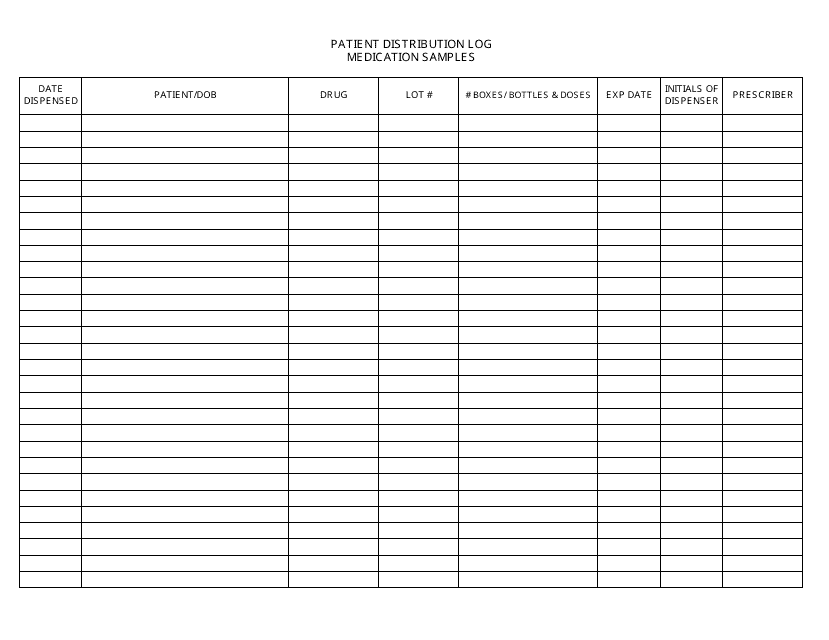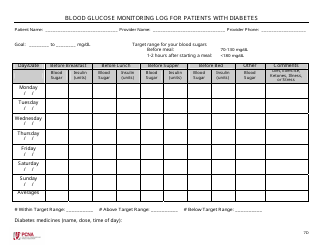Patient Distribution Log
A Patient Distribution Log is typically used in healthcare settings to keep track of where patients have been allocated within a facility like a hospital or nursing home. This document may show details such as the patient's name, room number, attending physician, the type of care required, as well as admission, discharge, or transfer information. It facilitates better patient management, ensures proper patient care is being delivered, and helps healthcare personnel to maintain an organized system for patient placement.
The Patient Distribution Log is usually filed by the healthcare provider or medical administrator in a hospital or clinic. It is maintained by professionals in the health information management department. This log is a crucial document to track the movement of patients within the healthcare facility, such as transfers between wards or units. Moreover, it can be used for reporting purposes and audits. However, regulations for maintaining such logs can vary depending on the country and specific state laws.
FAQ
Q: What is a Patient Distribution Log?
A: A Patient Distribution Log is a record-keeping tool used within the healthcare sector to track the movement and allocation of patients within a healthcare facility. It typically includes information about the patient's arrival, transfer between departments, discharge, and occasional readmission. It helps in efficient management of patients and resources.
Q: What information does a Patient Distribution Log typically contain?
A: A Patient Distribution Log usually includes the patient's name, patient ID number, admission date, departments where the patient is transferred, discharge date, and readmission (if any). It may also contain patient's diagnosis, treatment information, and notes from healthcare professionals.
Q: Who uses the Patient Distribution Log?
A: The Patient Distribution Log is mainly used by healthcare professionals including doctors, nurses, ward managers and hospital administrators. It helps them keep an organized track of patient movements, improves coordination between various departments and aids logistical planning.
Q: Why is a Patient Distribution Log important?
A: A Patient Distribution Log plays a crucial role in tracking the patient's journey through the hospital or healthcare facility. It aids in resource allocation, assists in managing patient flow, and can help identify patterns and trends that can lead to improvements in patient care. Additionally, it provides a useful audit trail in case of medical litigation.
Q: How is the information in a Patient Distribution Log kept secure?
A: The information in a Patient Distribution Log is protected under healthcare privacy regulations such as the Health Insurance Portability and Accountability Act (HIPAA) in the USA. Healthcare providers are required to implement administrative, physical, and technical safeguards to ensure the privacy and security of patients' details stored in such logs.
Q: Can a patient request access to their Patient Distribution Log?
A: According to healthcare privacy regulations like HIPAA in the USA, patients generally have the right to access their own medical records. However, the specifics may vary and some exceptions might apply, so it's best to consult with the particular healthcare provider or a legal advisor.



